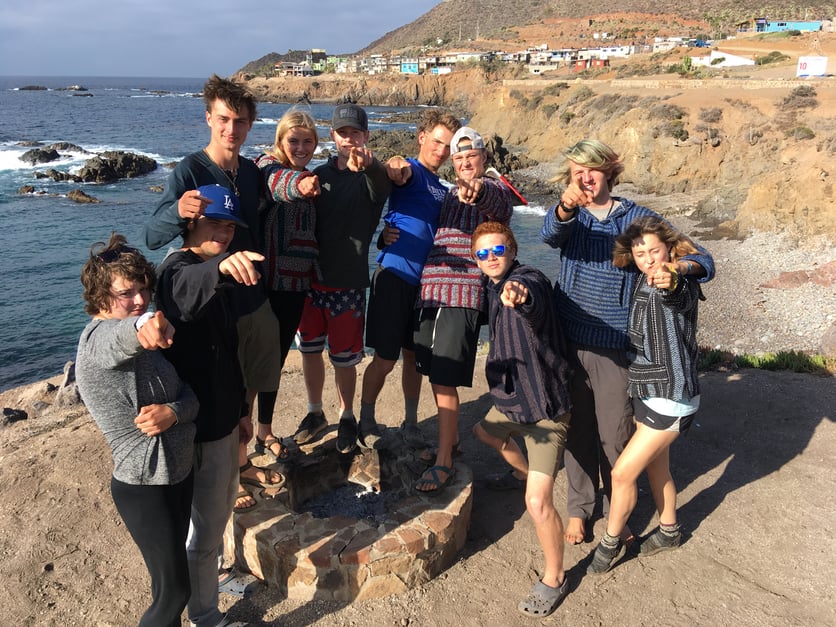The past two weeks for Proctor Academy's Mountain Classroom group have been packed with challenges that have forced students to get proximate to their learning. The Borderlinks portion of the Mountain Classroom program exposes students in person to the border issues that exist between Mexico and the United States. Through time spent on both sides of the border, students gained a powerful window into the depth and layers of border issues. Following border studies, the group traveled to Baja California for a sea kayaking expedition. This post is a long, so buckle up and enjoy the ride!
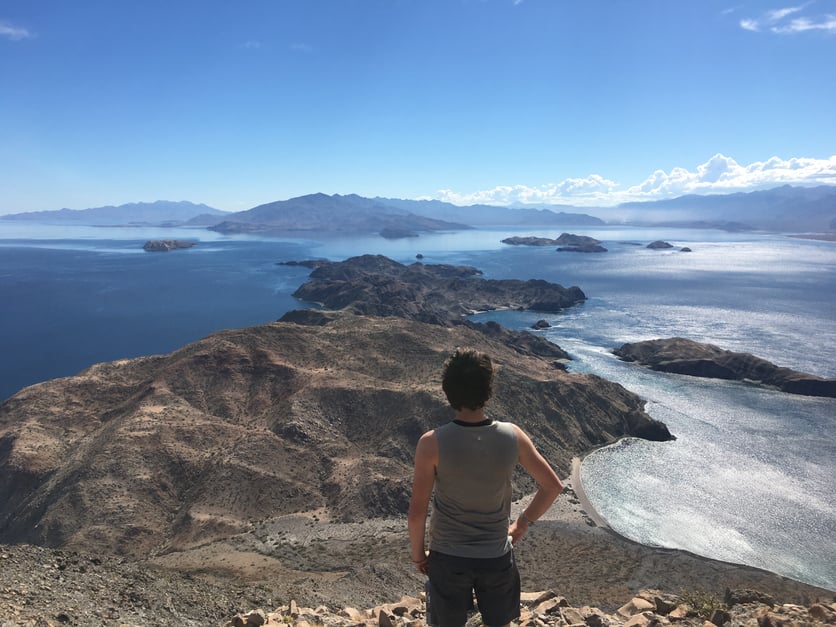
Amanda '19:
It has been almost three weeks since the Borderlinks part of the program began, and yet every detail is still fresh in my mind. The short amount of time plus type of impact that the experience made was almost like a stamp - press down, leave the mark, and lift up. We’ve been stamped. Allow me to explain how. Our Borderlinks experience began with a nondescript brick building in the middle of a street of nondescript brick buildings. Nothing in particular stood out except for perhaps a sign in the high right window: LAW ENFORCEMENT: NO ENTRY WITHOUT PERMIT.
The building is small but jam packed, with two offices on the immediate right and left as you enter, then a kitchen/dining room directly up the hall of the right. On the left there is a small waiting area. Further in, past a curtain, is 8 or 10 cozy rooms with 2 sets of bunk beds in each. Then, in the very back, there is an open “conference area” that consists of sofas, comfortable, sink-right-in chairs, and a few tables. We spent most of our time in the kitchen, gathered around the dining table, or in this conference room.
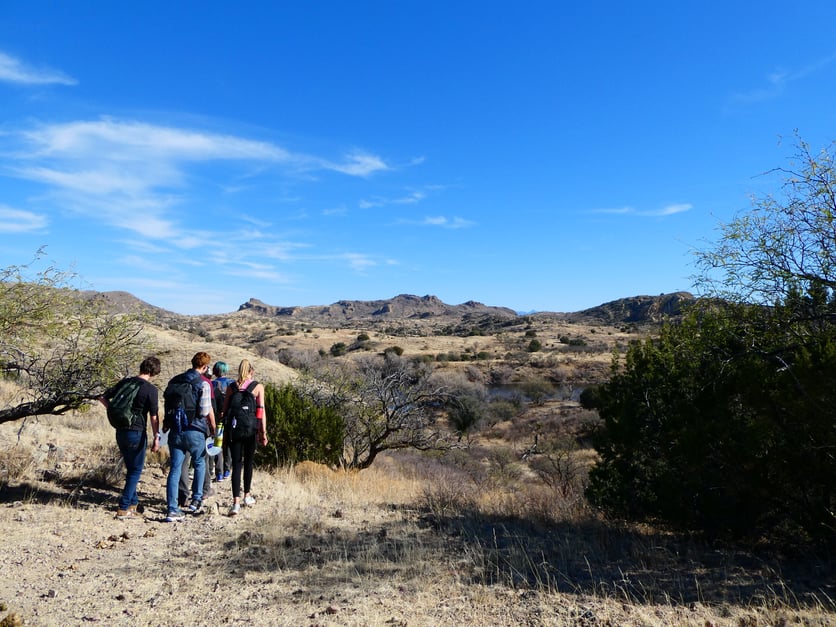
Upon entering for the first time, our curious eyes were drawn to news articles on billboards, about past visitors that had brought their passion back to their homes and continued Borderlinks’ work. There were also posters, stickers, mugs and such for sale to support the nonprofit. And, of course, the coffeepot in the waiting room. The biggest attraction of all.
A petite young woman named Cathie, with a nose ring and a constant smile, led us into the kitchen and began the 3-day period with introductions. We were asked about our names, the most impactful moment of Mountain so far, and two questions we had for Borderlinks: a small one and a big one. Most of our questions focused on the legality of the courts’ dealings with migrants, the migrants themselves, or the border itself.
We got to ask some of those questions soon afterward, as another woman named Nancy spoke to us about the court hearing we were about to attend. We were handed a packet of the names of all the people that were going to be tried that day, and told what to take notes on: language, where they had crossed the border, how they pled, and their sentence. She also gave us some more details on Operation Streamline, which is a process commonly used in immigration hearings in Arizona. They will bring up to 7 people who have illegally crossed the border into the courtroom and the same time and then sentence them together. It is efficient, easy, desensitizing, dehumanizing, and completely against the Declaration of Human Rights put forth by the UN, which the USA has signed and pledged to follow. Article 10: “Everyone is entitled in full equality to a fair and public hearing by an independent and impartial tribunal.”
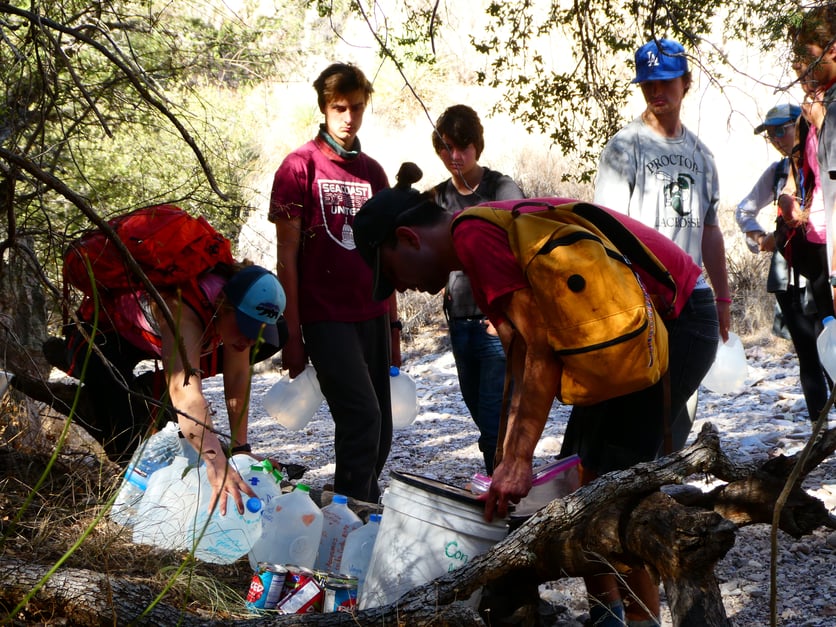
The courtroom is huge and echoing, with only a half-wall separating the benches from the people being tried. We sat in silence, pencils scribbling as quickly as possible to fill out 7 profiles as the trial went on. The judge asks a single series of yes-or-no questions to determine that they wish to plead guilty and be deported or sent to a detention center immediately instead of seek asylum. Each migrant that was tried in the hearing that we attended did so as the translator spoke quietly into a microphone that connected to the earbuds that they wore. Each of the migrants we saw spoke Spanish, and had crossed the Mexican-American border in Southern Arizona. Many of us were affected by the clear mindset of the whole court - get this over and done with, dismiss this round and bring the next in. They were streamlined.
Back at Borderlines we had a long discussion about the events in the courtroom and also shared our profiles. Each person who had crossed the border for the first time was immediately deported, while those who had had multiple instances were sent to a detention center for anywhere between 30 and 180 days.
Cathie then led in a man named Derik. He is from Honduras originally, but has made it to the United States and is staying here while he seeks asylum, one of the “legal” ways in. He told us his story of trials, terror, and exhaustion. I don’t wish to share specifics as I have not obtained his permission, but suffice it to say that we were all extremely impressed and shocked. He also showed us his ankle bracelet. While seeking asylum, migrants must still remain in detention centers, unless they can pay a fee. Derik could not, but turned in desperation to a company that paid the fee but slapped the bracelet on him - a bracelet that costs $450 a month, which also counts as the interest on the fee. His original bail was $12,000. He now owes over double that. Luke and Sam F. were so moved by Derik’s story that they are even now working on a senior project proposal to fundraise and help him.
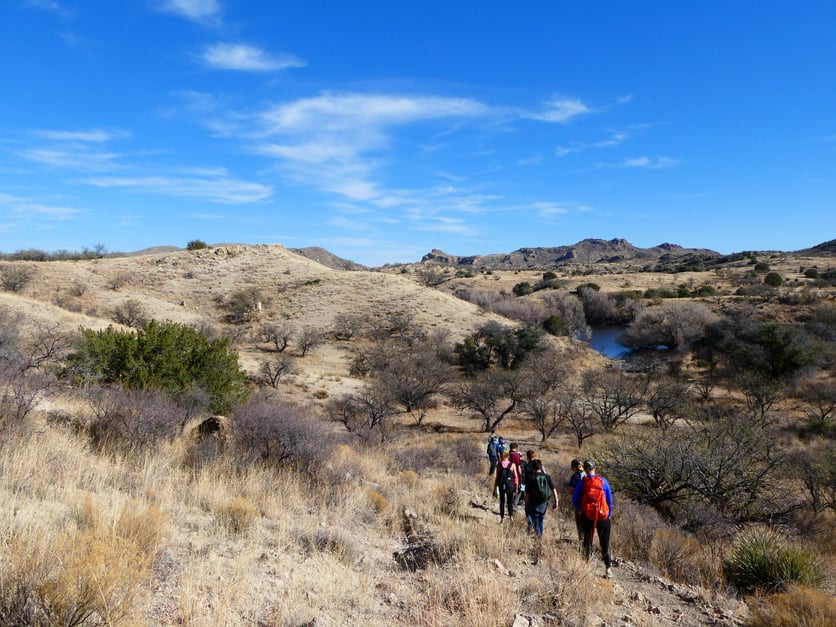
The next day we met with Michael, Derik’s roommate and a member of No More Deaths, another nonprofit that works closely with Borderlinks. He answered some questions on what they do, which is mostly support migrants during asylum cases or while serving detention center time or anything else they can do. Micheal led us on a walk to leave gallon water jugs and canned food in places that migrants commonly pass through - the desert is unforgiving to those that are unprepared.
When we returned, two women were waiting for us. They are members of Mariposas Sin Fronteras (Butterflies Without Borders) another nonprofit that focuses on supporting LGBTQA+ migrants that flee or are attempting to flee persecution in their countries. Again, while they are not mine to tell, both of their stories were inspiring and incredible. The bravery and strength of these women is legendary.
Our third and last day was spent in deep reflection. We discussed different perspectives on the border, plausible compromises and solutions, and what one person could do. Cathie was incredibly supportive and pushed us to continue expanding our minds. The immigration debate is so often made up of numbers. It is easy to forget those numbers are all people with hopes, dreams, fears, and pain. Cathie helped us discover ways we could continue to learn about border issues and educate others.
Borderlinks, and the people and stories involved, affected each of us so strongly that 8/10 of our epiphanies, an English class assignment that is almost exactly what it sounds like, were about mindsets that changed during or after the experience. The intensity and non-stop impact of the few days left a deep and strong chasm in us, with one pulsing question (one that many of us used as our ‘big question’ at the start) that may have an answer at last. What can we do? Anything and everything we can.
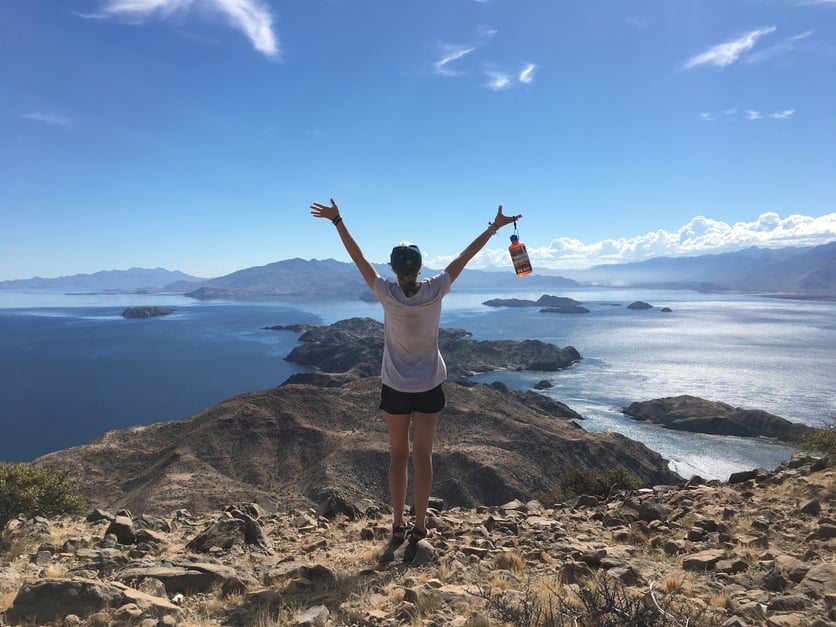
Olivia '19:
When it was time to write this blog I asked for a rubric, but I was told there wasn’t one, no format, just capture the experience in your own way. I don't think I have ever had a writing assignment without some set of guidelines. I guess in the end, this unconstructed blog post matches the rubric-less expedition we just endeavored.
The first night we arrived in San Diego we were not suspecting anyone to visit us in our trailer park campsite. To our surprise the world famous Jen Kleck arrived wearing a santa hat with a sack of presents in her hand. Mail! Up until now, many of us did not believe santa was real. The following day at Jen’s house we prepared for the next 10 days in Mexico. This consisted of waterproofing everything that wasn't in a can or a dry bag.
Pretty much our entire time on Mountain was leading up to the trip into Mexico, it was finally here! To everyone (including the parents) Mexico was a huge deal. Spending the last week with Borderlinks, we learned all about the border and how people risk their lives to escape poverty and look for a better life in the U.S. Crossing the border was almost underwhelming, shocking though how as Americans we were just able to waltz into bordering countries with little to no explanation though it so critically selective on the way back. It definitely put perspective on how privileged we are to be American and white.
Within minutes the landscape shifted from the tall city buildings of San Diego to the impoverished barrios that lined the highway of Tijuana to Ensenada. What drew our attention even more than the scenery change was the border wall, actually there are two walls. The second was built in 2009 on Mexican soil. The walls stretch for miles up and down hills, and even into the ocean.
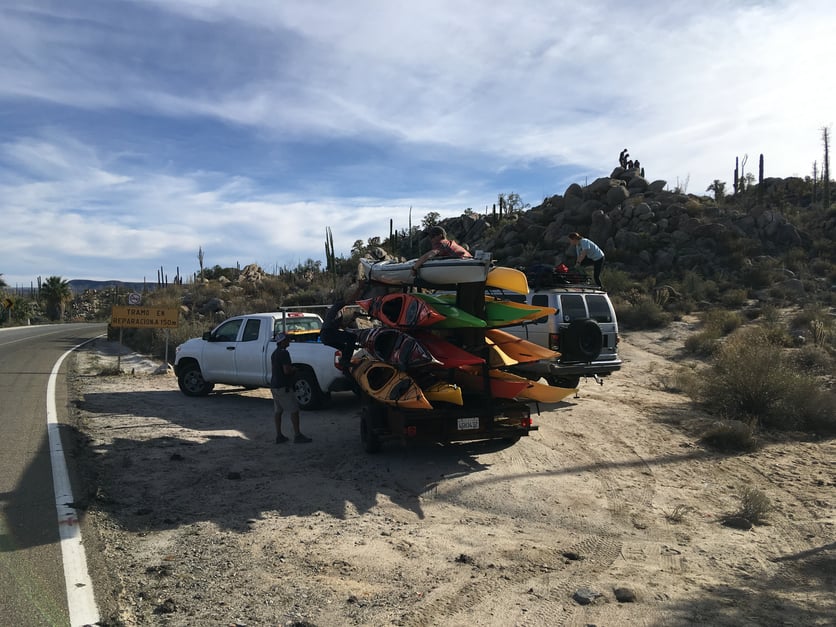
We drove for a few more hours before reaching La Bufadora, a small sea side tourist town where we would meet our kayaks and our other guide, Victor. Here some ventured into town while others swam in the Pacific to initiate the cross country adventure had made it from coast to coast. The next morning we departed from La Bufadora on our 10 hour drive south to Baiha de Los Angeles, the bay off of Baja in the Sea of Cortez where we would be paddling for the days to follow.
Upon Arrival, the gang was quick to realize the beautiful landscape we were diving into. White sand beaches, distant mountains, and stunning sunsets greeted us as we pulled into the bay. The following morning we headed out on the water, and for most of us this was our first time in kayaks. With a steady pace the first few miles were a breeze, well until the breeze actually picked up. We decided to stop paddling a few miles short of where we originally planned because we were faced with some strong headwinds. We set up camp on a thin strip of beach sectioned between a cove on the right, and the Sea of Cortez on the left. The island name was Coronado. If you could picture paradise in your head, this would be it.

On our second day we decided to take a day paddle to the northern part of the island where there is a volcano. The hike up the volcano was about 2 hours with the sun shining bright. At the top we encountered multiple false peaks, wildlife encounters, and a few accidental cactus removals. A couple hours passed and we made our summit official by taking multiple funny face photos. We returned to our campsite to spend another night and have the students plan out the 20 mile mile day we chose to take on.
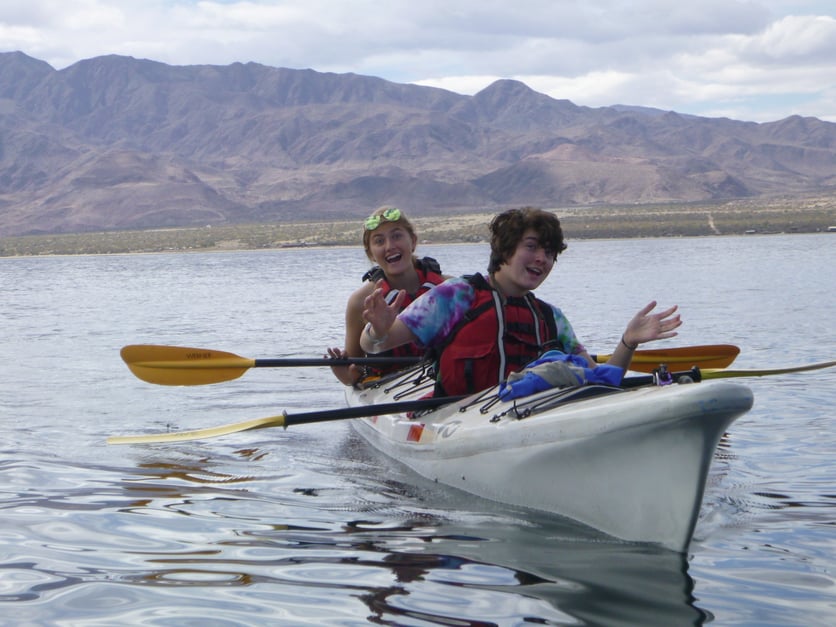
The 20 miler day started a bit earlier than usual. We packed up quickly and were off on this ambitious adventure. Our plan was to go 20 knots in one day then do about seven each day to return back to our original starting point. Let me remind you that you kayak almost as fast as you walk which is about 3-4 MPH. We took a lunch break around mile nine and decided that a few of us were not feeling as confidant in the original plan. We decided to keep going and see how we felt when we reached a suitable campsite. When mile 15 rolled around we stopped at a beach that had a few small huts and a dog. The dog was exceptionally friendly and so we decided that this would be our best option for the night.
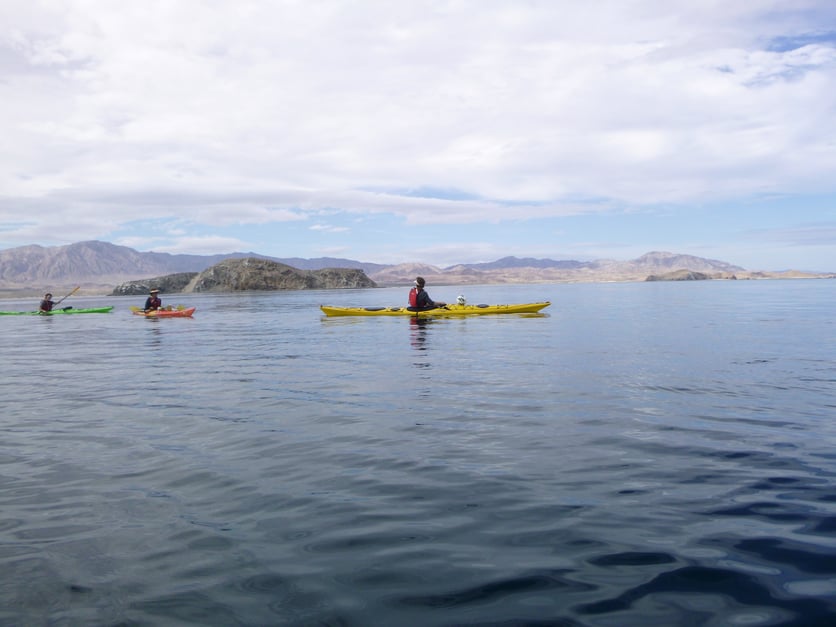
The following morning we paddled seven miles due north and reached this pond like mud flat area infested with clams. Half the group split up to fish while the other half discovered numerous amounts of delicious clams buried beneath the mud flats that we would eat later that night. To the right of the clam site, there was an old shipwreck of a fisherman's boat that only few of us discovered. The night held a feast of clams (the fish team was unlucky) which we would put on hot coals then cook over the stove. Only some of us got the runs. As we were going to bed we were shaken by the multitude of coyotes that were extremely near out campsite. There were at least 50 of them and they all were howling for hours maybe 30 feet away from us. Jen told us they were known to steal things as close as next to your head.

We departed from camp that morning and paddled about 5 miles to an island called Isla La Ventana. La Ventana, The Window, was a large triangle rock formation with a good sized hole in the middle, located off the side of the island. The beach was mostly rocky and so we had a discussion on if we wanted to leave tonight and paddle back to the mainland or paddle back at 4 am the next morning during the sun rise. The group took a vote and we decided to do the night paddle. Around seven we packed up our kayaks though were distracted by some UFO in the sky. Some thought it was aliens, others thought it was an asteroid, in the end we found out it was the Space X Falcon 9 Heavy launch from Florida. After our interesting divergent, we pushed off the shore with headlamps and glow sticks only for Jen to tells us to turn off out headlamps and move our hands though the water. A few gasps and “wows” were let out by the group as the water lit up around our hands. The small blue lights were surreal. The experience was like something out of the movie Avatar. We paddled about three miles without our headlamps, mesmerized by the bioluminescence. With a little compass navigation by Sam Wyckoff, we arrived safely at our desired campsite. Truly a once in a lifetime experience.

Sam '19:
The next morning was a hectic one. We loaded kayaks, cleaned our campsite, and prepared individual breakfasts all while getting ready to say goodbye to the sea we called home for the week before. After a huddle and a hug to appreciate our experience, we loaded back up into Victor’s van and traveled ten hours north, back to La Bufadora. A night of rest led to a crazy and incredible day on the Pacific Ocean. To begin, we hopped in the wavy water and practiced rolling our vessels. Soaked and cold, we started the next leg of our journey.
Less than a mile in, we had already wasted hours playing in the waves and perfecting maneuvers. Jen, Sean, and Victor led us past an island of sea lions and to a rocky pour-over area. When a swell approached the rocks, it would rise and “pour over,” creating a mini waterfall-like obstacle. Personally, as a kayaking novice, I was daunted by the large drop off we were facing. Olivia Clark, however, did not seem touched by the same fear. She was the first to attempt, and made quite the splash when she rolled off her boat. She rose from the waves laughing and unharmed, and the rest of had a go.
Looking back, that pour-over was definitely not as bad as I had made it out to be in my head. The group and our amazing guides balance promoting challenge and growth and safety well, so there was no “real” risk. Plus, that was nothing compared to what else we would do in the coming days. The rest of the day was spent in a similar fashion. We found more rapids, had countless more laughs, and got plenty more wet. We only had about two or three miles to go overall before reaching our take-out point, but it took hours. Every place we went there seemed to be countless adventures to indulge in: Rolling, talking to our guides, exploring the beauty of La Bufadora. The fun never stopped.
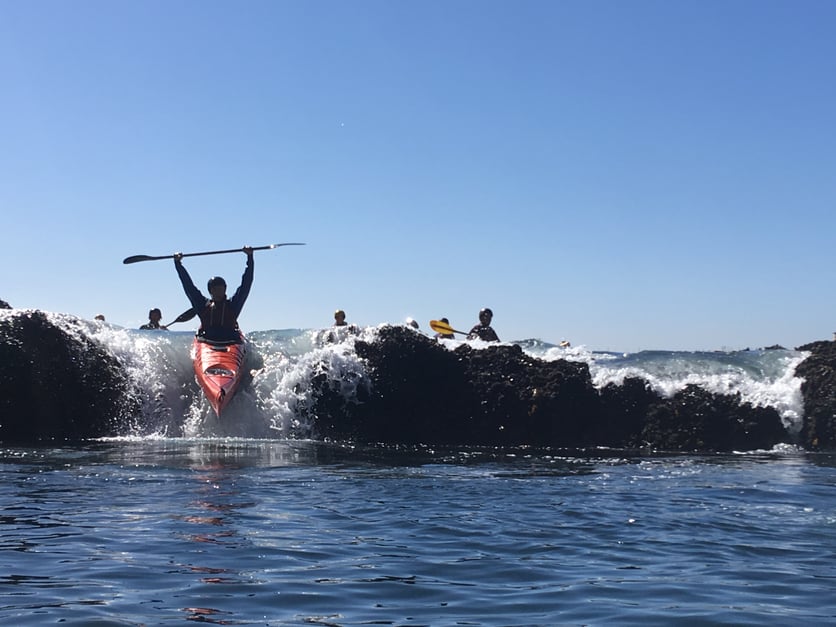
Exhausted and hungry, the gang went back to the seaside bunkhouse and ate. Games and a dance party went on until a night of well deserved — and very comfortable — rest in beds. We awoke excited and full of glee, ready to see what else the La Bufadora coast had to offer. After getting our kayaks packed and in the water, we headed straight for “the blowhole,” or “la bufadora” in Spanish. The town was named after this popular site, were waves (to the best of my understanding) pressurize a small hidden cavern, and launch up sprays of water high when washed over. From the end of the market, you can see the spray. From the seat of a kayak, you can go in it.
An awesome experience, but not my highlight of the day. A mile or so later we hit an area with two giant rocks. In between, water would rush through to create a wild set of rapids that not even Jen could emerge from completely dry. I don’t quite know how to describe the water any other way then violent. Like I said before, though, our group is careful. To pacify any worried friends or family, have no fear! Wave rapids are not the same as those in a river. A river has a continuous flow, and if you fall you run the risk of getting stuck, injured, or more. In the ocean, water can get crazy for a dozen seconds, but then it clears out as the waves pass or retreat. Any effects of a fall here, and there were many, would be an easy rescue and a good story.

We all took on the chaos one by one, some with grace and success, others with, well, everything but. Anna especially took a hard fall, where she was launched into the air and came down in a crash with a bloody nose, a big smile, and an epic photo. After returning from that days trip, we were given free time around town. We got snacks, saw the blowhole from above (underwhelming to say the least), and bartering (since we had time earlier in the week for shopping, many of us took the time to work on our silver tongues). We were treated to a night out for dinner at a local restaurant and a final night on a mattress.
The next day was for travel. We said goodbye to our Mexican home and got on our mobile one, Debby the Mountain Bus. After a stop in Ensenada for a little more shopping and dollar tacos, we got to the Mexican-American border. Unlike the twenty minutes of trouble leaving America, we had a three hour wait in store coming back. The line of cars was filled with vendors and performers looking for a few bucks. We ate churros, ice cream, and fruit the whole way to the U.S., with the help of Kate’s incredible bartering skills and fluent Spanish. A man selling puppies visited our window as well, but, as much as everyone wanted a mountain dog, we had to pass.
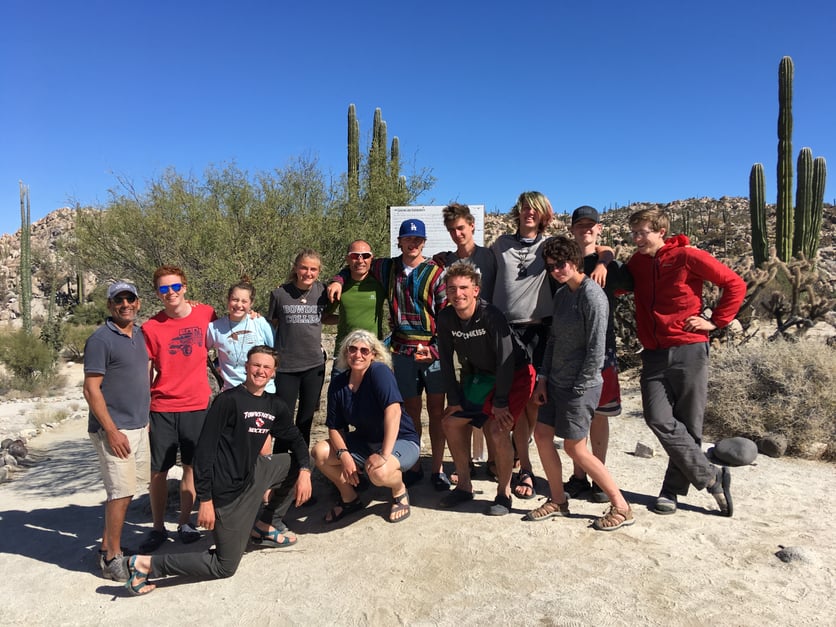
We finally arrived back in San Diego later that night. Nate and I cooked hot dogs, burgers, mashed potatoes, and mac and cheese for the dinner for everyone; The most American meal to celebrate our return. Now, with just two weeks left, we hold on to the last moments of this incredible program. And, even though every expedition we do can be described as no less than extraordinary, I have no doubt that Sea Kayaking in Baja will stay with us for the rest of our lives.
